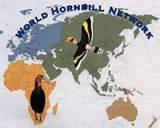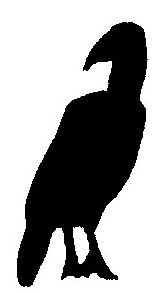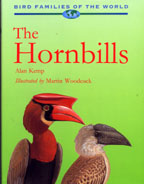About Hornbills
An introduction to the bird family Bucerotidae
Hornbills are members a family of birds that includes some of the most spectacular, least known and most endangered creatures in the world. One of these, the Great Hornbill Buceros bicornis gave its common and scientific Latin name to the group for the horn-like projections from the top of its bill, part of an enlarged casque that is unique to the family. The scientific name for the family is the Bucerotidae.
There are at least 58 species of hornbills now recognised for the family, and more may be separated once further research is completed. The Bucerotidae are divided almost equally between Africa (28 species) and Asia (30 species) – in technical terms they have an Old World distribution in the zoogeographical realms of the Afrotropical (28 species), Oriental (29 species) and Australasian (1 species) regions. Their geographical extends across sub-Saharan Africa, from the Cape Province of South Africa north to Mauritania and Ethiopia, with one species, the African Grey Hornbill just extending onto the Arabian Peninsula. It resumes on the Pakistan-India border from where it stretches through Myanmar, Malaysia and Thailand to southern China, Vietnam, the Philippines, and then along the chain of Indonesian islands to New Guinea and the Solomon Islands. A few species are restricted to a single oceanic island or archipelago, such as Palawan, Sulu, Sumba or Narcondam, and these include the rarest and most vulnerable hornbill species in the world.
Almost all of the hornbills in Asia live in forest and feed mainly on fruit. Many of the hornbills in Africa live in savanna and feed mainly on small animals. Each species has exact requirements for the habitat and diet that it prefers. Most species nest in pairs and are unique among birds in that the female seals herself into a natural cavity in a tree or rock, lays eggs and then, while incarcerated, drops and replaces her flight feathers, and then takes full care of the eggs and chicks. The male, throughout the nesting period, delivers food to the nest occupants, either as single items carried in the bill tip or as loads carried in the gullet and regurgitated one-by-one at the nest. A high proportion of species also live in small groups, whose members all help to feed the breeding female. The two largest and most primitive hornbills do not seal up the nest entrance, although the remainder of their biology is the same as all other species that close the entrance to a narrow vertical slit using mud, food remains or their own droppings. Sources of more detailed information are listed below:
The Hornbills (Order
Bucerotiformes). Oxford University Press, Oxford. 1995.
Bird families of the World Series No 1., by Alan C. Kemp.
 World Hornbill
Network Website Click Here
World Hornbill
Network Website Click Here
This page is maintained by Graham Martin.

